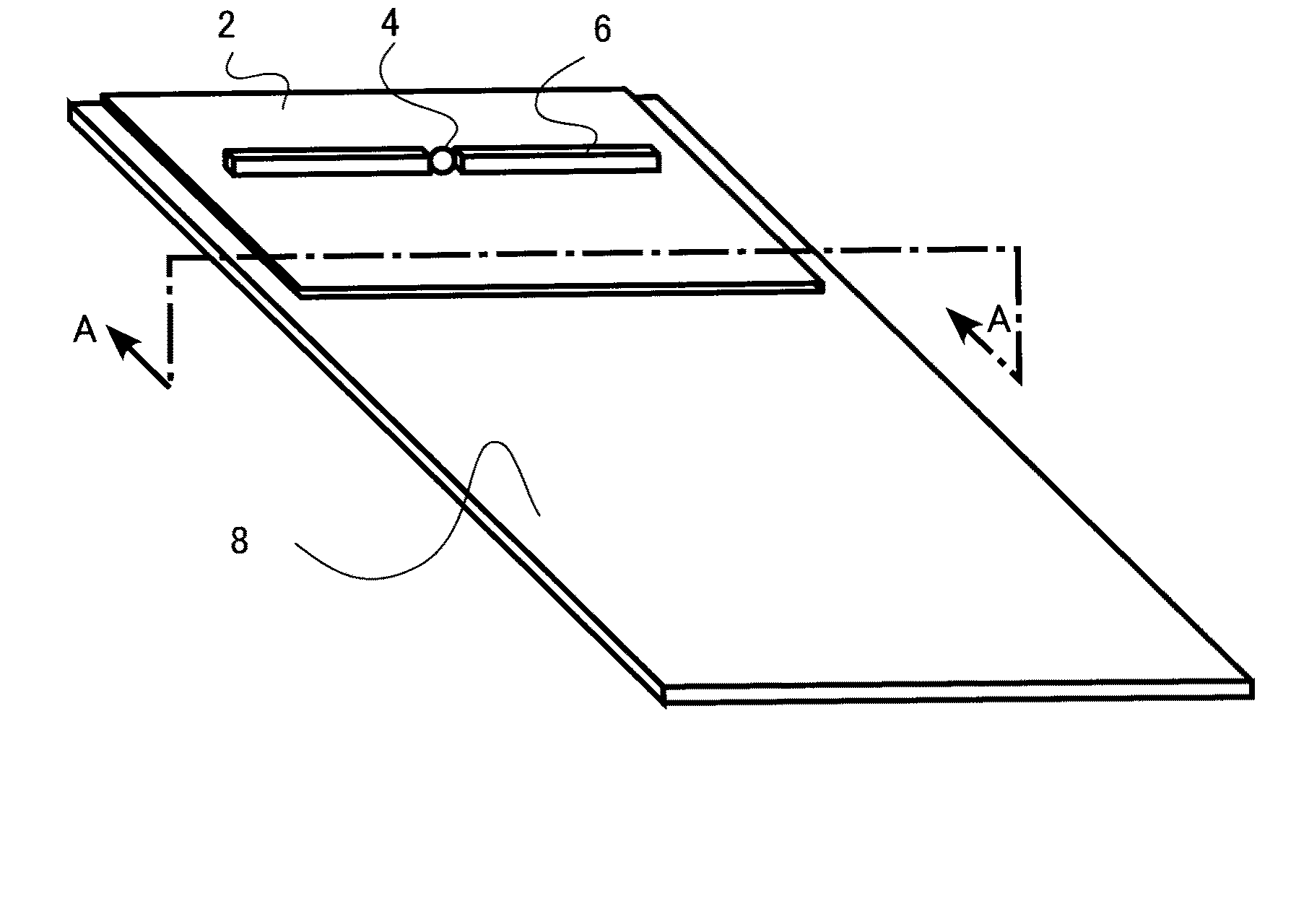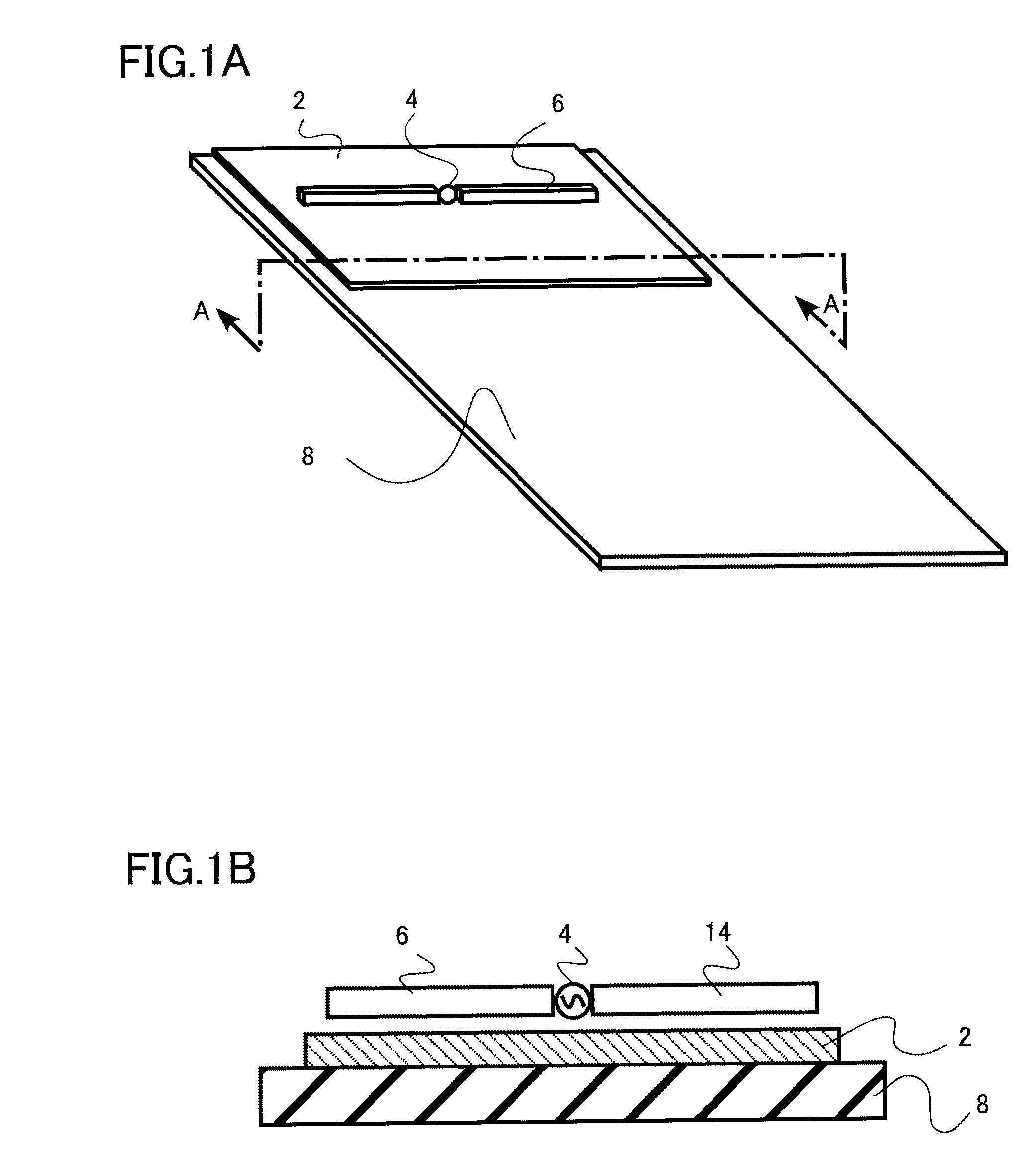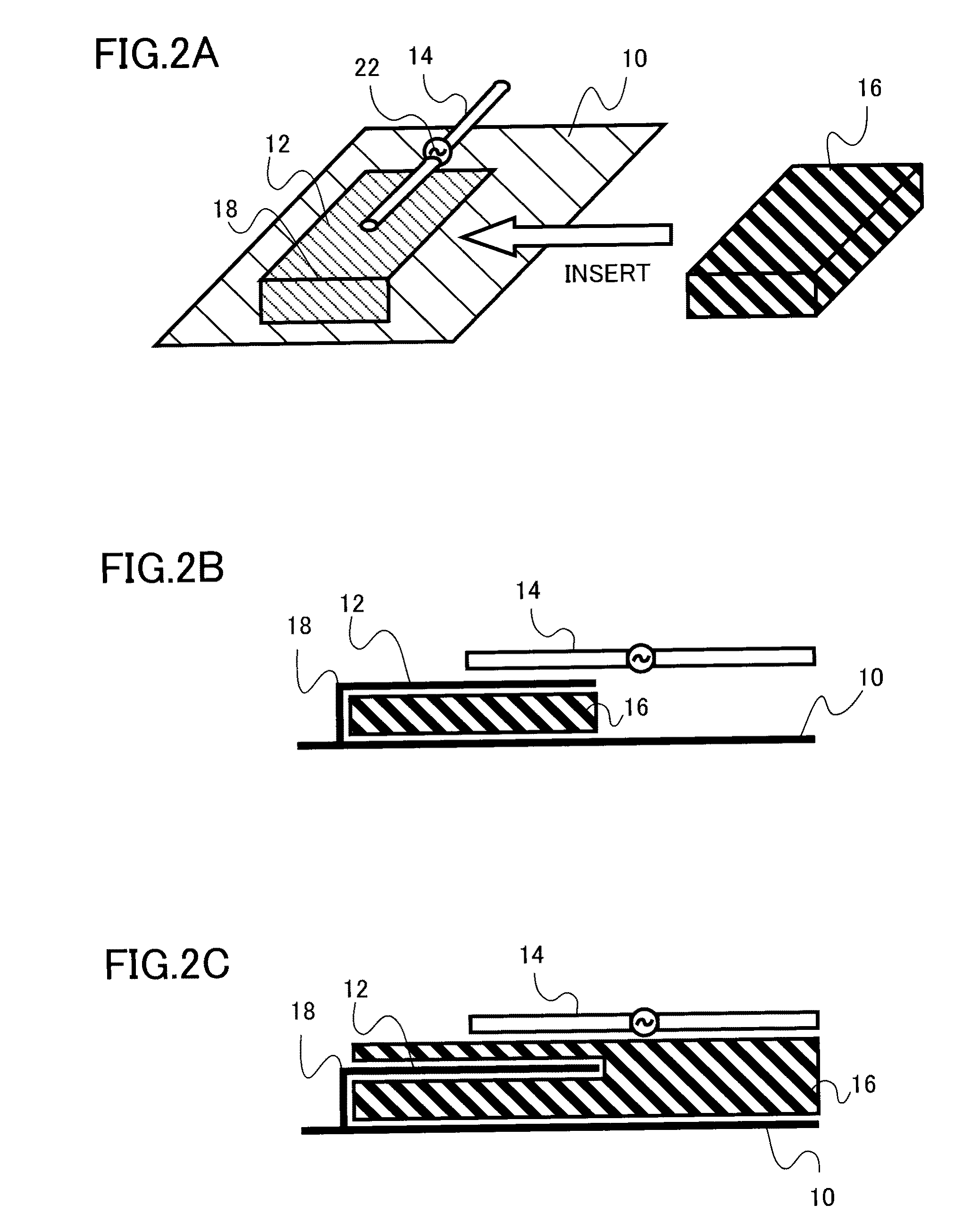Core-shell magnetic material, method of manufacturing core-shell magnetic material, device, and antenna device
- Summary
- Abstract
- Description
- Claims
- Application Information
AI Technical Summary
Benefits of technology
Problems solved by technology
Method used
Image
Examples
first embodiment
[0028]A core-shell magnetic material according to an embodiment of the present invention includes core-shell magnetic particles and oxide particles. The core-shell magnetic particle includes a magnetic metal particle (core) and an oxide coating layer (shell) for coating surface of at least a part of the magnetic metal particle. The magnetic metal particle contains at least one magnetic metal selected from the group of Fe, Co, and Ni, at least one nonmagnetic metal selected from the group of Mg, Al, Si, Ca, Zr, Ti, Hf, Zn, Mn, a rare-earth element, Ba, and Sr, and at least one element selected from carbon and nitrogen. The oxide coating layer is made of an oxide containing at least one nonmagnetic metal contained in the magnetic metal particle. Oxide particles exist at least in a part of space between the magnetic metal particles and containing at least one nonmagnetic metal selected from the group of Mg, Al, Si, Ca, Zr, Ti, Hf, Zn, Mn, a rare-earth element, Ba, and Sr. Nonmagnetic m...
second embodiment
[0066]A method of manufacturing a core-shell magnetic material of a second embodiment includes: a step of manufacturing magnetic metal particles made of magnetic metal and nonmagnetic metal; a step of coating surface of the magnetic metal particles with carbon; a step of performing heat treatment on the magnetic metal particles coated with carbon under reducing atmosphere to convert carbon to hydrocarbon; and a step of oxidizing the magnetic metal particles. The magnetic metal is at least one magnetic metal selected from the group of Fe, Co, and Ni, and the nonmagnetic metal is at least one nonmagnetic metal selected from the group of Mg, Al, Si, Ca, Zr, Ti, Hf, Zn, Mn, a rare-earth element, Ba, and Sr.
[0067]In the step of manufacturing the magnetic metal particle and the nonmagnetic metal particle, the thermal plasma method or the like is used. The method of manufacturing the magnetic metal particle using the thermal plasma method will be described below. First, for example, argon ...
third embodiment
[0080]A method of manufacturing a core-shell magnetic material of a third embodiment is similar to that of the second embodiment except for the following points. In the step of manufacturing the magnetic metal particle, a magnetic metal particle and a nonmagnetic metal particle are manufactured by simultaneously spraying magnetic metal powders having an average particle diameter of 1 to 10 μm in which a magnetic metal and nonmagnetic metal are solved in a solid solution state, and nonmagnetic metal powders having an average particle diameter of 1 to 10 μm in thermal plasma, and the nonmagnetic metal in the magnetic metal powders and the nonmagnetic metal powders is at least one nonmagnetic metal selected from the group of Mg, Al, Si, Ca, Zr, Ti, Hf, Zn, Mn, a rare-earth element, Ba, and Sr. Therefore, content overlapping that of the second embodiment will not be repeated.
[0081]In the step of manufacturing the magnetic metal particle and the nonmagnetic metal particle, it is preferab...
PUM
| Property | Measurement | Unit |
|---|---|---|
| Thickness | aaaaa | aaaaa |
| Thickness | aaaaa | aaaaa |
| Thickness | aaaaa | aaaaa |
Abstract
Description
Claims
Application Information
 Login to View More
Login to View More - R&D
- Intellectual Property
- Life Sciences
- Materials
- Tech Scout
- Unparalleled Data Quality
- Higher Quality Content
- 60% Fewer Hallucinations
Browse by: Latest US Patents, China's latest patents, Technical Efficacy Thesaurus, Application Domain, Technology Topic, Popular Technical Reports.
© 2025 PatSnap. All rights reserved.Legal|Privacy policy|Modern Slavery Act Transparency Statement|Sitemap|About US| Contact US: help@patsnap.com



